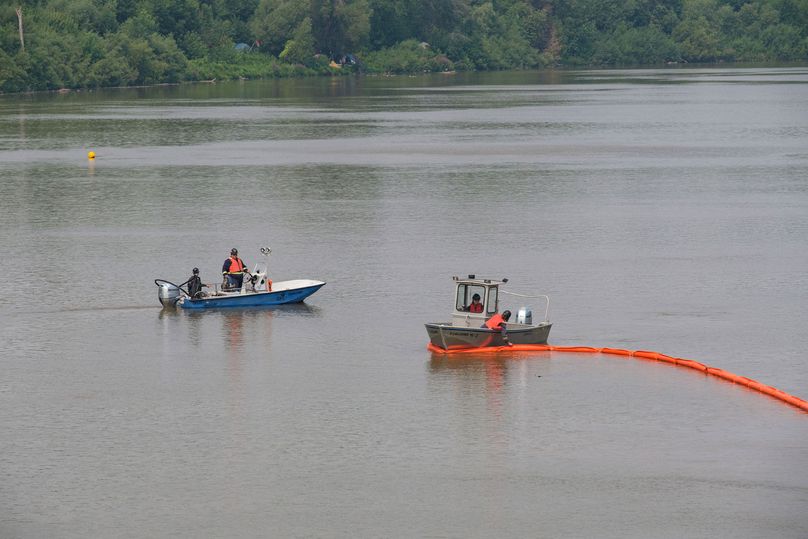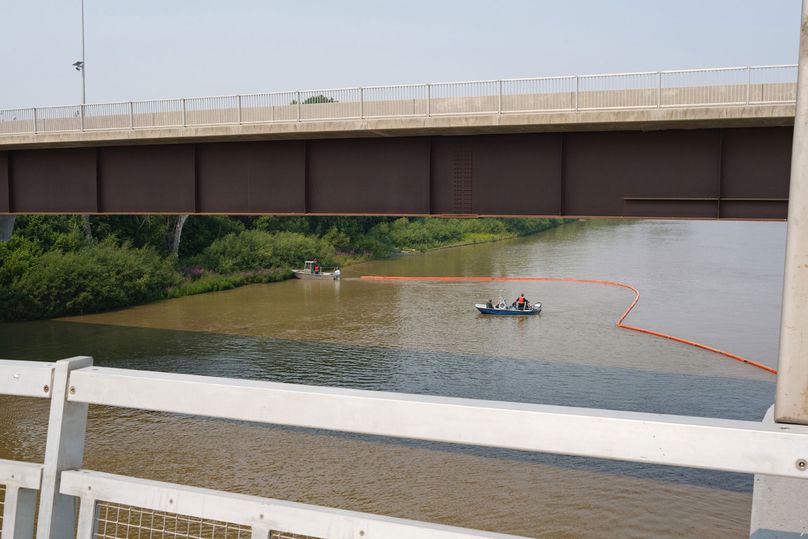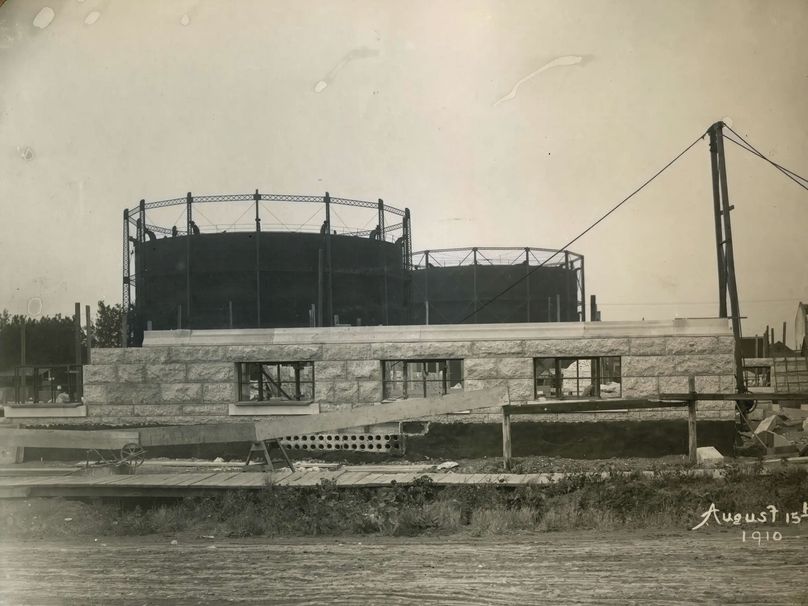On July 31, crews installed an absorbent boom on the Red River near the Disraeli Bridge to capture historical contaminants on the riverbed. This absorbent boom is a carbon filter barrier installed downstream of a historically impacted area of the riverbed. It will remain in place until the end of October.

Contractors installing the boom on the red river.
Enlarge image: Two boats on the river with an orange boom trailing behind one boat.
This installation is part of our work to remediate contamination left behind by the former operators of a manufactured gas plant at 35 Sutherland Avenue in Point Douglas. The contaminants come from deposits of coal tar, a by-product of the gas produced on the site from 1883 to 1957. The gas was used for street lighting, space heating and cooking. During that period, some of the coal tar waste was dumped in the river.
Boom installation
During the open water season, naturally occurring bubbles in the river sediment move through a settled layer of coal tar. During this process, hydrocarbons coat the outside of the bubbles, and once they reach the surface of the water, they create an oily sheen.

A view from above the boom located on the Red River Under the Disraeli Bridge.
Enlarge image: An orange boom trails behind a boat next to a bridge.
The installation of this absorbent boom is a temporary measure. We’re planning more extensive remediation of the contaminated site following regulatory approval.
The City of Winnipeg, Manitoba Environment and Climate Change and Fisheries and Oceans Canada were notified prior to the boom’s installation.
Site history
The gas works was established by the Manitoba Electric and Gas Light Company in 1883 on Rachel Street (now Anabella). It was taken over by the Winnipeg Electric Street Railway Company in 1898. The firm changed its name to the Winnipeg Electric Company in 1924.
The gas works produced a combustible gas for street lighting, cooking, space heating and commercial use. It operated until 1957. The first phase of site decommissioning occurred during 1959 and 1960 and included demolition of a large portion the plant’s facilities. In 1969, the final decommissioning occurred with demolition of remaining structures. The site was eventually redeveloped, with Centra Gas Manitoba Inc. as the most recent occupant.

Gas works in background during construction of Rover Station in 1910.
Enlarge image: A construction site of industrial buildings with wooden fencing surrounding them.
Manitoba Hydro took possession of the property when it purchased Centra Gas in 1999.
Since 2012, we’ve managed the site according to the Comprehensive Environmental Management Plan (CEMP) approved under the Manitoba Contaminated Sites Remediation Act.
If you have any questions or concerns, email us at WCE@hydro.mb.ca.
Read more about our environmental protection measures in our Environment, Social, and Governance Report.



